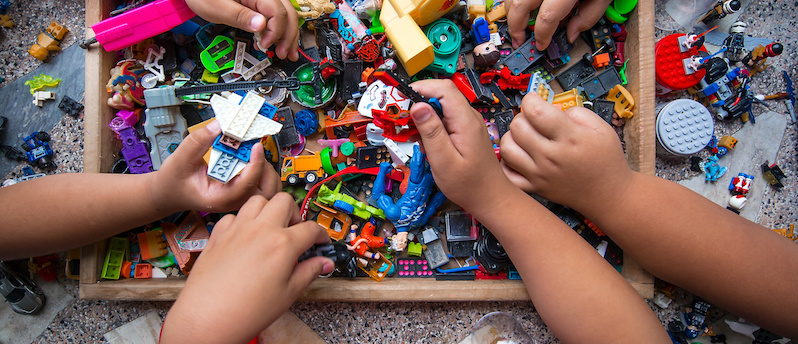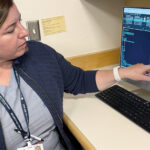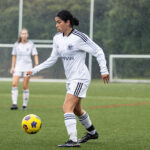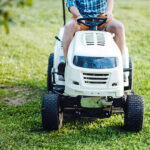Study: Children with upper limb differences have better emotional health

Children born with upper limb differences face unique challenges in life. Conditions can range from failure of fingers to separate to complete or partial absence of a limb, which may make it difficult to perform certain tasks as easily as their peers. Often, parents of children with limb differences worry about how these physical challenges will affect the emotional development of their child. However, recent research from Boston Children’s Hospital has found that children with congenital hand differences have excellent emotional health.
A recent study led by Dr. Donald S. Bae, a pediatric orthopedic surgeon in the Hand and Upper Extremity Program at Boston Children’s Orthopedic and Sports Medicine Center, found that while children with upper limb differences exhibit decreased upper limb function, some form better peer relationships and have more positive emotional states compared to population norms.
The study
Over the course of two years, almost 600 children and adolescents with congenital upper limb differences were evaluated on upper extremity function, pain, anxiety, depression and peer relationships. The assessment outcomes for 300 of the patients were analyzed for this study, and all study participants were enrolled in the Congenital Upper Limb Differences registry.
As orthopedic providers and as surgeons, of course we want to improve physical function. But this study underscores the importance of an individual’s participation, peer interaction, and emotional health.
Dr. Donald Bae
“In the interest of not only providing high-quality care, but also investigating treatment outcomes, we helped create a multi-center registry,” Bae explains. This study is one of the first to use the national registry, and is a combined effort between Boston Children’s and St. Louis Children’s at Washington University. Moving forward, this registry can be utilized to bolster research efforts that may help improve patient care for children with limb differences.
The results
The study found that while kids with hand and upper limb differences were physically less proficient than the overall population, they actually did not score much lower — particularly adolescents with limb differences. Although these findings are important, Bae thinks there is much more to the story.
Bae believes the most important takeaways are those that involve the emotional health and peer-to-peer relationships of these patients. “As orthopedic providers and as surgeons, of course we want to improve physical function,” he says. “But what this study really underscores is the importance of an individual’s participation, peer interaction and emotional health.”
I feel like we tend to understand what other people are going through. That could be because we’ve learned how to adapt, so we understand people better.
Sarah, study participant
Both younger children and adolescents reported higher scores for peer relationships, as well as lower levels of depression and anxiety. “Despite these physical differences, many kids with congenital upper limb differences have great peer relationships and are unlikely to be more anxious or more depressed than other kids,” says Bae.
Other studies that have looked at emotional and social health in children with these conditions align with these findings.
The rationale
So why do children with congenital limb differences have better peer relationships and lower levels of depression and anxiety? Sarah, a high school junior, says growing up with a congenital hand difference helped her learn to communicate with others about her difference and understand the emotional impact of what it’s like to be different. “I feel like we tend to understand what other people are going through,” says Sarah. “That could be because we’ve learned how to adapt, so we understand people better. When someone else is going through a difficult time, we can empathize with them.”
Although he stresses that he is not a psychologist nor a developmental pediatrician, Bae agrees that children’s coping mechanisms may actually serve to improve their emotional development. “Our findings reinforce the notion that these children are incredibly capable,” he says. “They just figure out a way to do things despite any seemingly-major impairment. They’re often much stronger than we give them credit for.”
When meeting with parents of a child with an upper limb difference, Bae will often use studies such as this to show them that their child is at no disadvantage when it comes to social and emotional health. “I tend to have a very positive approach to those initial consultations,” he says. “I emphasize to parents that their children will do wonderfully; they will participate, have great relationships with their peers and emotionally do very well. By being able to provide some assurance to the family that their child will do well overall, it allows us to focus on the hand function.”
Learn more about the Hand and Upper Extremity Program.
Related Posts :
-

Ask a sports medicine specialist: Why are ACL tears so common among female athletes?
When an athlete is sprinting after an opponent who suddenly stops or changes direction, their anterior cruciate ligaments (ACLs) make ...
-

Forging a path back to school after orthopedic trauma
Orthopedic trauma can force children to miss school, sometimes for an extended period. But even when patients have regained enough ...
-

Jackie’s dreams of playing professional soccer back on track after ACL surgery
From her dorm in Newcastle, England, Jackie Zapata can hear fans roaring in the soccer stadium a few blocks away. ...
-

What orthopedic trauma surgeons wish more parents knew about lawnmower injuries
Summer is full of delights: lemonade, ice cream, and fresh-cut grass to name a few. Unfortunately, the warmer months can ...





